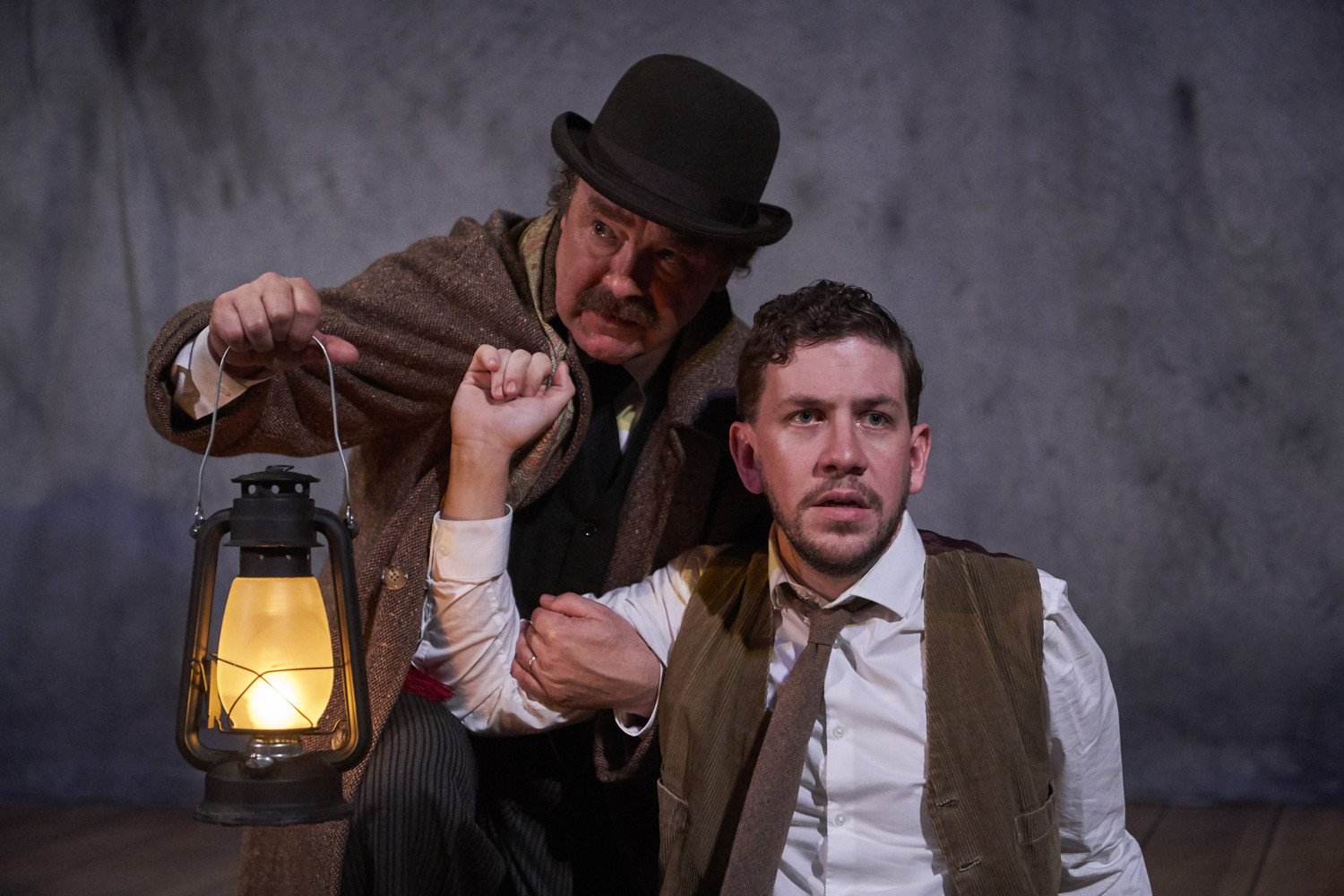Review: THE WOMAN IN BLACK at Royal George Theatre
 THE WOMAN IN BLACK is a prime example of the power of live theater: relying on evocative language, simple yet effective sound and lighting design, and skilled acting, this two-man gothic thriller easily surpasses any high-budget horror film in its ability to create a communal sense of fear among an audience.
THE WOMAN IN BLACK is a prime example of the power of live theater: relying on evocative language, simple yet effective sound and lighting design, and skilled acting, this two-man gothic thriller easily surpasses any high-budget horror film in its ability to create a communal sense of fear among an audience.
When I saw this play at London's Fortune Theatre, where it has been running continuously since 1989, the audience (which included many students) actually screamed in unison at key moments. Now, PW Productions and Pemberley Productions have brought the West End production to the Royal George Theatre for its Chicago premiere, staged by the original British director Robin Herford with a cast of Chicago actors. On opening night, the audience contained their terror with more Midwestern reserve than teenaged Londoners, but the audible gasps, whispers, and nervous laughter were unmistakable. Stephen Mallatratt's stage adaptation of Susan Hill's novel remains as chilling as ever.
The action begins in an empty theater: a fitting setting, as this production marks the end of three dark years for the Royal George's mainstage. Bradley Armacost portrays elderly solicitor Arthur Kipps, who has enlisted the help of a young actor (Adam Wesley Brown) to expel the ghosts of his past. In a witty opening sequence, the actor attempts to coach Kipps through a dramatic reading of his own memoirs, but they quickly conclude that he is no Olivier. Soon, the actor himself takes on the role of young Kipps, and a captivating play within a play unravels, with the elderly Kipps playing all of the supporting characters.
Transported back in time to Edwardian London, we meet Kipps in his early 20s, happily engaged to his beloved Stella and busily at work in a promising career. When his firm sends him to a remote corner of northeast England to settle the estate of a reclusive old woman, this level-headed young man encounters a world of vengeful ghosts, haunted corridors, and rural superstitions for which he is totally unprepared. As Kipps is drawn ever deeper into a web of terror over the course of two hours, his skeptical refrain that he "does not believe in ghosts" descends into a desperate prayer against the horrors of the misty marshes. It would be a shame to spoil the many twists and turns that happen along the way, but suffice it to say that the well-crafted plot continues to surprise through the final scene.
Though the novel was first published in 1983, the language of Mallatratt's adaptation rivals classic Victorian mysteries in its elegance and atmospheric quality. Armacost and Brown's engaging delivery of Kipps' tale brings to vivid life the bleak setting and suspenseful plot, aided by Kevin Sleep's spooky lighting and Gareth Owen's timely sound effects (based on Rod Mead's original sound design). There are even clever instances of meta-theatrical commentary. For example, in an early scene set in the theater, the elderly Kipps marvels at the new-fangled use of recorded sound technology. Later, the same sound effects that the actor shows Kipps are seamlessly woven into the soundscape of the play within a play. Moments like these highlight the special magic of this play, and indeed of theater as an art form: two actors, armed with a superior script and strategically employed tools of the trade, keep an audience spellbound as the play courses toward its ghastly end.
Even for viewers who, like myself, are not typically fans of the horror genre, the brilliant storytelling of THE WOMAN IN BLACK makes the experience more than worth a few shivers down the spine. And for those who love an old-fashioned ghost story on a long winter's evening, one couldn't ask for a better production this holiday season.
THE WOMAN IN BLACK runs through February 17 at the Royal George Theatre, 1641 N. Halsted Street, Chicago, IL 60614. Tickets are available at 800-982-2787 or www.thewomaninblack.com.
Photo credit: Roger Mastroianni
Review by Emily McClanathan
Reader Reviews

Videos

